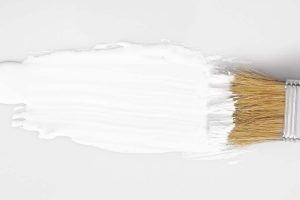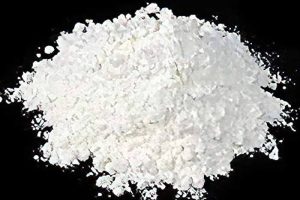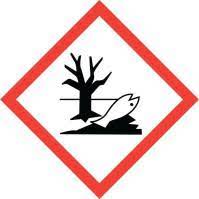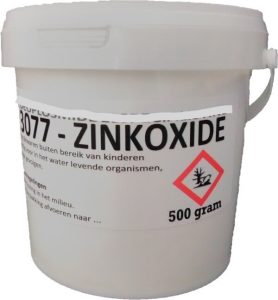White
The most common white pigment used is titanium. Every painter has it on his palette. Okay, maybe not the watercolor purists. I myself have a whole liter in gouache of that color, I use it so often that I bought it in a large dose. But what exactly is titanium?

Titanium is a metal that is widely found in the earth’s crust. About 0.6% of the earth’s crust contains titanium, making it the fourth most common metal on earth after aluminium, iron and magnesium. Titanium and titanium alloys are used in aircraft, missiles and other projectiles where light weight and temperature resistance are important. Because titanium does not react in the human body, it is used for artificial hips, bone pins and other implants. So many advantages.

Titanium dioxide also exists as a food additive E171 and there is something to be said about that. In this composition, E171 contains very small particles of titanium dioxide, also known as nanoparticles. Powdered titanium dioxide (PW6 pigment) has been proven to be harmful to your health when inhaled and may cause lung cancer.
The food additive E171 may no longer be used in food products in the Netherlands since 2022, but what about other consumer products such as toothpaste, lip balm and sunscreen? There, titanium oxide is indicated with CI 77891 to make things even more complicated.
Before general panic breaks out: research has been done on this stuff and it can’t be ruled out that the DNA may or may not change and therefore it should no longer be used. Of course, that doesn’t mean that after brushing your teeth, or applying sunscreen for a summer, you will immediately die. We don’t, but what about other, smaller organisms?
Another dubious pigment is zinc white or chinese white (PW4). Zinc is a chemical element with the symbol Zn. A mineral that the human body needs for good resistance, vision, skin, hair and nails, normal endocrine system and fertility of men and women, strong bones, ability to concentrate and normal memory, the construction of proteins and the production of cells and tissues. It is impossible to exclude zinc. It can be found everywhere in nature, including in food (potatoes, endive, broccoli to name a few.)

A natural product with good characteristics. Then why is there a danger symbol next to and on a tube of white zinc paint? With safety standard H410: Very toxic to aquatic life, with long-lasting effects.
On a pigments site I even found this: “Avoid discharge into the environment. Clean up spilled/leaked material. Dispose of contents/packaging to an approved waste disposal company.Other sites have the H410 signal somewhere very small, without any further explanation.
Further online research shows me that indeed small amounts of zinc (oxide) are not dangerous and are even necessary for humans, animals and plants. Zinc oxide is also useful, like titanium, in sunscreen because of its reflective property, and therefor can be used conveniently against skin cancer. However, it is very harmful in larger doses, especially for aquatic organisms.


And now I hear you thinking: yes, but that little bit of paint that I use….
With this kind of gnome thinking things go wrong.
The same goes for acrylic paints, empty tubes of which also have to be brought to the chemical depot of the recycling center or waste disposal company and leftovers shouldn’t be flushed down the sink. If everyone thinks: “Well, that little bit of mine doesn’t matter”, you suddenly get a huge pollution of all little bits.
Prevention is better than cure, so no more zinc white is used here. I’m still in doubt about titanium white… is it harmful or not? And what are the alternatives?
Disclaimer: All regulations mentioned in this blog post are accordingly to European or Dutch standards.